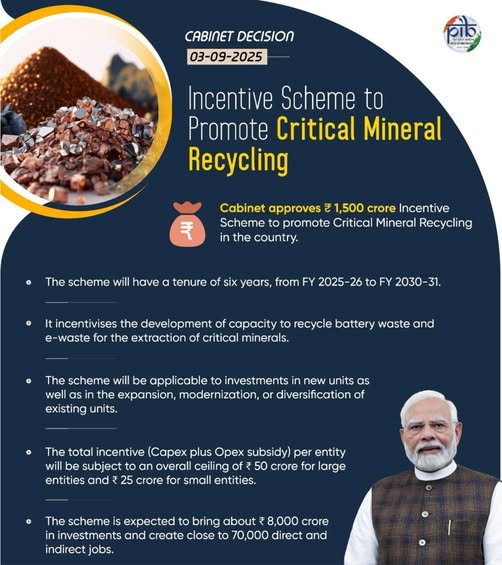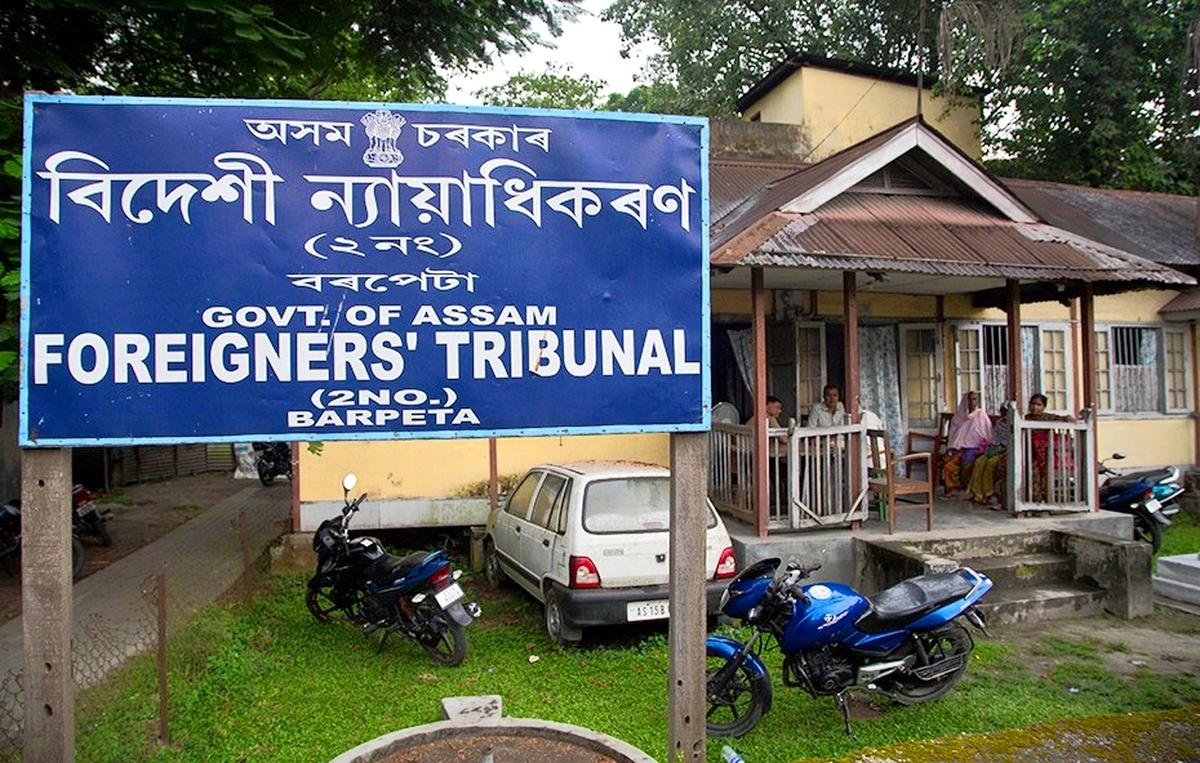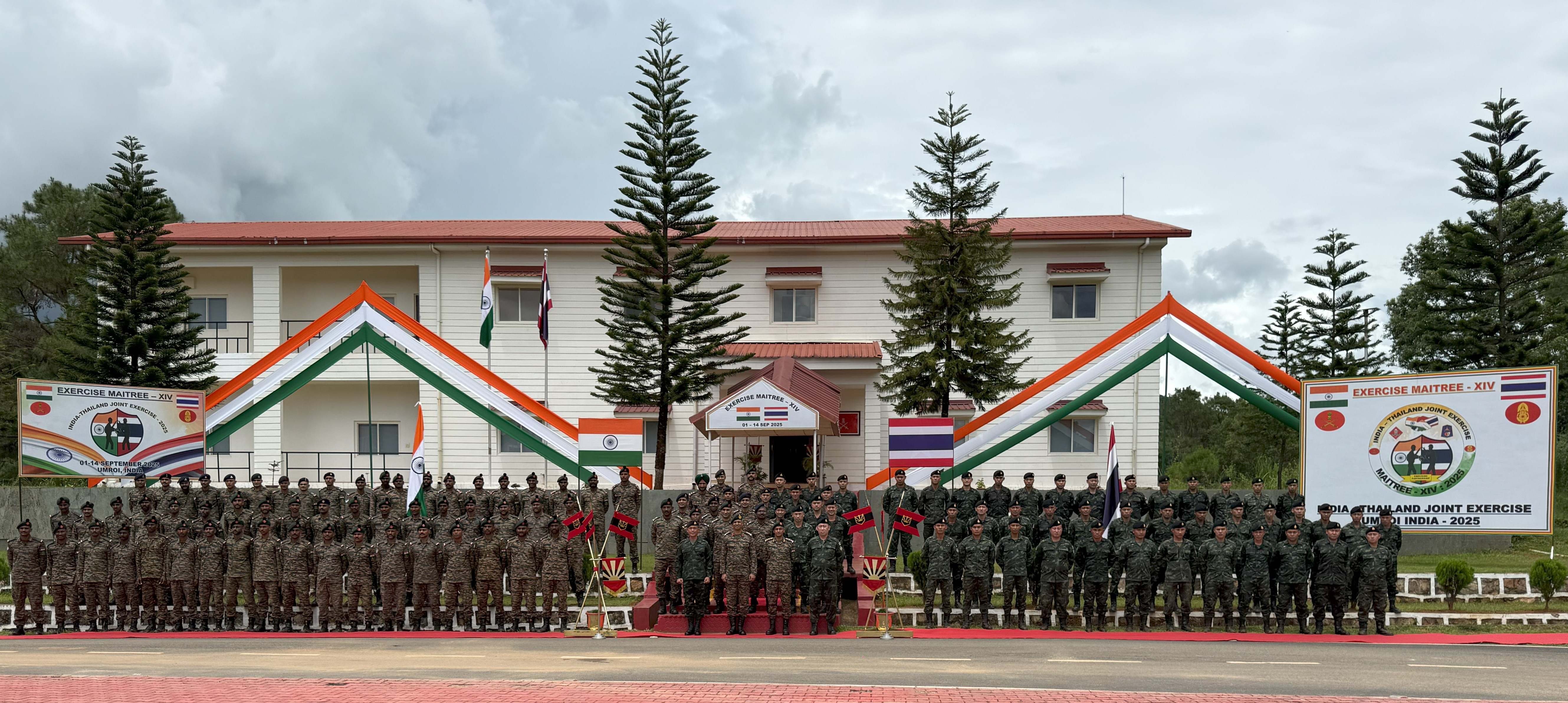Unique Disability ID (UDID) Scheme

- 08 Sep 2025
In News:
The Unique Disability ID (UDID) project, launched by the Department of Empowerment of Persons with Disabilities (DEPwD), Ministry of Social Justice and Empowerment, aims to create a national database of Persons with Disabilities (PwDs) and provide them with a single identification document that is valid across the country. Despite its importance, recent data highlight serious gaps in its coverage and implementation.
Current Status and Coverage
- Less than 40% of India’s projected PwD population have been issued UDID cards.
- Over 11 lakh applications remain pending, with more than 60% delayed for over six months.
- In most States, fewer than half of PwDs possess the card; only Tamil Nadu, Meghalaya, Odisha, and Karnataka have crossed the 50% coverage mark.
- West Bengal stands out with an extremely low coverage of around 6%.
- Data for Andhra Pradesh and Telangana were unavailable separately.
Features of the UDID Card
- Structure: An 18-character alphanumeric ID, encoding details such as state, district, disability type, year of birth, and a security checksum.
- Types of Cards (based on disability percentage):
- White: Below 40% disability.
- Yellow: 40%–80% disability.
- Blue: Above 80% disability.
- Issuance: Authorized by district hospitals or the hospital where the PwD is undergoing treatment, under the Rights of Persons with Disabilities (RPwD) Act, 2016.
Objectives of the UDID Project
- Creation of a centralized, nationwide database of PwDs.
- Elimination of duplicate records and ensuring portability across States.
- Online and offline submission of applications, with provision for renewal and updates.
- Tracking of physical and financial progress of beneficiaries through an integrated Management Information System (MIS).
- Facilitation of access to benefits under schemes such as:
- ADIP Scheme – providing assistive devices like wheelchairs, prostheses, and hearing aids.
- Scholarships for education.
- Reservations in employment and educational institutions.
Implementation Challenges
- Delayed Processing: Over half of all applications remain pending beyond six months, with Himachal Pradesh, Ladakh, and Mizoram having the highest backlog.
- Digital Divide: The application process requires online submissions and document uploads, which excludes many due to low digital literacy. Only about 60% of Indians above 15 years can use basic digital tools; the share is even lower among women and PwDs.
- Staggered Roll-out: Earlier, States issued disability certificates locally; the transition to UDID was not communicated effectively, leading to confusion.
- Reduced Funding: While overall allocation for PwD welfare has increased, budgetary support for the UDID sub-scheme has declined, constraining outreach.
- Political Marginalization: PwDs constitute only 2.68 crore people (2011 Census), making them a relatively small political constituency. This reduces policy priority, as their collective influence on electoral outcomes is limited.
Significance
- Welfare Access: UDID acts as a gateway to schemes, ensuring uniformity and portability across States.
- Data-Driven Policy: Enables real-time monitoring and evidence-based policymaking.
- Administrative Efficiency: Prevents duplication and leakages in welfare delivery.
- Social Inclusion: Supports the objectives of the RPwD Act, 2016 and aligns with India’s commitments under the UN Convention on the Rights of Persons with Disabilities (UNCRPD).
Incentive Scheme to Promote Critical Mineral Recycling

- 08 Sep 2025
In News:
- The Union Cabinet has approved a ?1,500 crore Incentive Scheme to promote critical mineral recycling in India, marking a significant step towards reducing import dependence and ensuring sustainable supply chain resilience.
- The scheme forms part of the broader National Critical Mineral Mission (NCMM), which seeks to build domestic capacity in exploration, mining, acquisition of foreign assets, and recycling of critical minerals.
Key Features of the Scheme
- Tenure: Six years, from FY 2025-26 to FY 2030-31.
- Outlay: ?1,500 crore.
- Eligible Feedstock:
- E-waste
- Lithium-ion battery (LIB) scrap
- Other scrap sources such as catalytic converters from end-of-life vehicles.
- Beneficiaries:
- Large, established recyclers.
- Small/new recyclers and start-ups (allocated one-third of scheme outlay).
- Applicability: Investments in new units, as well as expansion, modernization, or diversification of existing units.
Incentive Structure
- Capex Subsidy:
- 20% subsidy on plant, machinery, equipment, and utilities for projects that commence production within the stipulated timeframe.
- Delays will lead to reduced subsidies.
- Opex Subsidy:
- Linked to incremental sales over FY 2025-26 baseline.
- 40% subsidy in the 2nd year (FY 2026-27).
- 60% subsidy in the 5th year (FY 2030-31), subject to achieving threshold sales.
- Ceilings per Entity:
- Large recyclers – ?50 crore (with ?10 crore cap on Opex subsidy).
- Small recyclers/start-ups – ?25 crore (with ?5 crore cap on Opex subsidy).
- Scope: Incentives are limited to the extraction of critical minerals, not just black mass production.
Expected Outcomes
- Development of 270 kilotons of annual recycling capacity.
- Production of around 40 kilotons of critical minerals annually.
- Mobilization of about ?8,000 crore investment.
- Creation of nearly 70,000 direct and indirect jobs.
Significance
- Strategic Minerals Security: Provides near-term solutions to bridge supply-demand gaps until new mines and foreign acquisitions materialize.
- Circular Economy Boost: Promotes recycling of high-value e-waste and LIB scrap, reducing environmental load.
- Atmanirbhar Bharat: Strengthens domestic industries in electronics, renewable energy, and EV sectors by ensuring reliable access to lithium, cobalt, nickel, and other critical minerals.
- Inclusivity: Special provisions for start-ups and small recyclers to encourage innovation and wider participation.
Matanomadh in Kutch
- 08 Sep 2025
In News:
- A remote village in Gujarat’s Kutch district, Matanomadh, is emerging as a potential analogue site for India’s future Mars missions.
- Researchers from the Space Applications Centre (ISRO), Savitribai Phule Pune University, and the Birbal Sahni Institute of Palaeosciences have confirmed the presence of jarosite, a mineral also discovered on Mars, making the region significant for planetary studies.
Jarosite and Its Relevance
- Composition: Jarosite is a yellow-brown mineral composed of potassium, iron, and sulphate, typically formed in arid, saline environments under extreme geochemical conditions.
- Formation: On Earth, it is linked to volcanic activity, where volcanic ash containing sulphur reacts with water-rich environments.
- Global Occurrence: Rare on Earth; found in Mexico, Canada, Japan, Spain, USA (Utah, California), and in India at Kerala’s Varkala cliffs and now Kutch.
- On Mars: First detected in 2004 by NASA’s Opportunity Rover at Meridiani Planum, jarosite is considered strong evidence of water activity on the red planet.
The Kutch Discovery
- Age: Jarosite deposits at Matanomadh have been dated to around 55 million years ago (Paleocene period).
- Geological Significance: Indicates that environmental and chemical conditions in Kutch millions of years ago resembled those on Mars.
- Current Findings: The mineral occurs as fine deposits mixed with clay. When mixed with water, this clay expands—closely resembling Martian sulphate-clay formations.
Importance for Space Research
- Field Analogue for Mars: The site provides a natural laboratory to test rovers, instruments, drilling, geochemistry, and astrobiology experiments for upcoming missions like Mangalyaan-2.
- Astrobiology Potential: Sulphates such as jarosite can trap organic molecules, offering clues to possible microbial life.
- Palaeo-evolution Insights: Helps decode the geological and chemical history of Mars.
- Complementary Sites: While Ladakh’s Tso Kar Valley (HOPE Mission) simulates Martian living conditions, Kutch offers geological parallels for studying surface mineralogy.
Challenges
- The site is currently waterlogged and threatened by coal mining activities in the vicinity. Scientists have urged that Matanomadh be declared a site of planetary geo-heritage to protect its unique deposits.
Foreigners Tribunals

- 08 Sep 2025
In News:
The Union Home Ministry has recently empowered Foreigners Tribunals (FTs) with expanded judicial authority under the Immigration and Foreigners Act, 2025, which came into effect in September 2025. This marks a significant shift in India’s approach to dealing with suspected illegal immigrants, particularly in states like Assam.
Background
- Earlier Framework: Foreigners Tribunals were originally set up under the Foreigners (Tribunals) Order, 1964, issued under the Foreigners Act, 1946. Their main role was to determine whether a person was a foreign national.
- In Assam, such tribunals were established after the Illegal Migrants (Determination by Tribunals) Act, 1983 was struck down by the Supreme Court in 2005. Currently, around 100 FTs are functional in the state.
- Earlier, detention of declared illegal immigrants was carried out through executive orders, without direct judicial sanction.
Provisions of the 2025 Act
The Immigration and Foreigners Act, 2025 repeals older legislations and replaces the 1964 Order, giving FTs enhanced powers akin to those of a civil court and a first-class judicial magistrate.
New Powers of Foreigners Tribunals:
- Summoning and enforcing attendance of individuals and examining them under oath.
- Requiring production and verification of documents.
- Issuing commissions for the examination of witnesses.
- Directing suspects (“proceedees”) to appear in person.
- Issuing arrest warrants in case of non-appearance.
- Sending suspected or declared foreigners to detention/holding centres pending deportation.
Procedural Aspects:
- Notices are served to suspected individuals to prove their citizenship within 10 days.
- Cases are to be disposed of within 60 days of reference.
- Declared foreigners are placed in detention or transit camps until deportation.
Significance
- Strengthened Legal Framework: Brings uniformity and judicial backing to the process of identifying and detaining unauthorised foreigners.
- Due Process Assurance: Ensures quasi-judicial scrutiny before declaring an individual a foreigner.
- Regional Relevance: Particularly critical in Assam and Northeast India, which face unique challenges of cross-border migration.
- Administrative Clarity: Clearly demarcates powers between executive authorities and tribunals.
Exercise MAITREE

- 08 Sep 2025
In News:
The 14th edition of Exercise MAITREE-XIV, a joint military exercise between India and Thailand, commenced at the Joint Training Node (JTN), Umroi, Meghalaya.
Background
Instituted in 2006, Exercise MAITREE is a bilateral military exercise aimed at enhancing cooperation, interoperability, and mutual understanding between the Indian Army and the Royal Thai Army. The 13th edition was held at Fort Vachiraprakan, Tak Province, Thailand.
Key Features of MAITREE-XIV
- Participants:
- Indian Army – 120 personnel, represented by a battalion of the Madras Regiment.
- Royal Thai Army – 53 personnel from the 1st Infantry Battalion, 14th Infantry Brigade.
- Focus Area:
- Company-level counter-terrorist operations in semi-urban terrain, in accordance with Chapter VII of the UN Charter.
- Tactical drills, joint planning, special arms skills, physical fitness, and raiding operations.
Significance
- Reinforces bilateral defence cooperation and strengthens regional security architecture.
- Reflects the shared commitment of India and Thailand towards peace, stability, and counter-terrorism efforts.
- Enhances the operational synergy of both armies, particularly in addressing contemporary security challenges in the Indo-Pacific.
